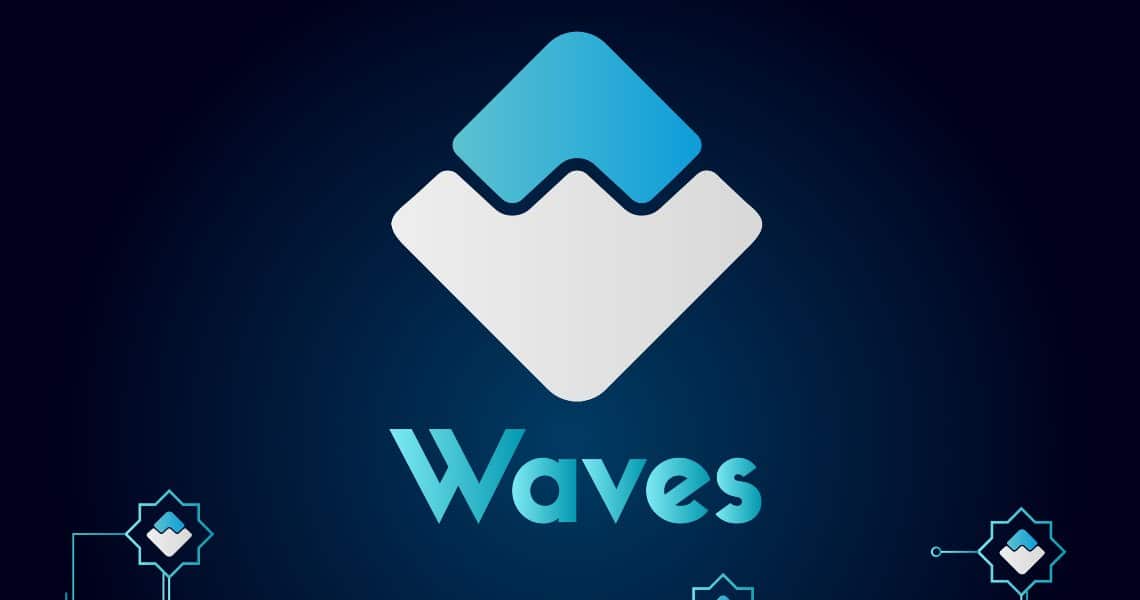
Coinposters
Everything You Need To Know About Waves (WAVES)

Waves is a blockchain ecosystem that includes a cryptocurrency, a token launch platform, and a decentralized exchange (DEX). The project’s creators hoped to deliver a robust toolkit to aid in the creation of Web 3.0 decentralized applications. Their goal was to create an easy-to-use Ethereum alternative in order to increase blockchain adoption. To this sense, the platform’s development team was a huge success.
Waves enables the creation and trading of cryptocurrency tokens without the need for complex smart contract implementation. Tokens, on the other hand, can be produced and managed using scripts that run in user accounts on the Waves network.
The aim is that creating new tokens (and the applications that control them) should be similar to establishing a standard web application.
Programs and apps are executed as attachments to these transactions to achieve this purpose, and new assets are assigned a unique identity. Scripts can only be attached when the asset is created.
These assets are intended to be traded within the Waves ecosystem, which has its own built-in decentralized exchange (Waves.Exchange) designed to facilitate trade between Waves blockchain tokens and other tokens.
The Waves team implemented smart contract capability to the Waves MainNet in 2018, allowing third-party developers to create decentralized applications (dapps). Furthermore, in 2019, the Waves platform team began marketing Waves Enterprise, a version of the network geared for universities.
History
The network first appeared on the market in June of 2016. From the start, the coin was a success. During its initial coin offering (ICO), the company raised more over $16 million. A large part of this achievement can be ascribed to the team’s experience. Many of Waves’ main team members were also extensively involved in the NXT project.
The network was significantly upgraded by the team in September 2018. Support for multi-sig addresses, token freezing, atomic swaps, voting, and Oracles were all included in the upgrade. Oracles are sensors that operate outside of the blockchain and communicate with it. These cutting-edge systems enable blockchains to connect with the physical world in novel and interesting ways.
In October 2018, the platform broke the record for the most transactions processed by any blockchain project in a single day. The platform impressively stole the crown from another third-generation coin, EOS. On this historic day, analysts recorded 6.1 million transactions on the site.
How it Works
The Waves blockchain software may be executed by two types of nodes: full nodes and lightweight nodes.
Full nodes maintain a complete history of transactions, whereas lightweight nodes rely on full nodes for transaction confirmation and network interactions.
Waves employs leased proof-of-stake, a variant of the proof-of-stake (PoS) consensus method, to keep its distributed network in sync (LPoS).
The LPoS Blockchain
Any node that decides to lock up tokens can be eligible to add blocks to the blockchain in a typical proof-of-stake fashion. The likelihood that a node will be allowed to add a block increases or decreases depending on the number of coins held in a particular contract.
With the LPoS, nodes can now lease their balance to full nodes. This means that when a full node is chosen and compensated for producing the next block, nodes who lease tokens to that chosen node earn a percentage of the dividend.
Waves-NG
Waves-NG is the protocol that chooses which node has the privilege to produce the next block, and it is a variation of an idea that was first suggested (but rejected) for Bitcoin (BTC).
The Waves blockchain is divided into two types of blocks: “key blocks” and “micro blocks” by Waves-NG. A randomly selected proof-of-stake miner creates key blocks. Other nodes utilize a public key in this block to build multiple microblocks that include transactions.
Smart Assets
The capacity to generate ‘Smart Assets,’ tokens with an attached script written in Ride, a Waves-native programming language, is key to the Waves platform. By attaching a script, any token can be given functionality. The scripts’ execution costs 0.004 WAVES.
Because Waves allows users to create tokens without any programming knowledge, tokens and subsequent transfers are done as attachments to transactions. Various transaction kinds are introduced via plug-ins, which are implemented as extensions on top of the blockchain.
What Makes it Unique
The architects of the Waves platform are looking ahead. Given that tokenization is one of the market’s fastest-growing businesses, the choice to create an easy-to-use token launch platform makes sense. Because of its unique strategy and track record of providing valuable blockchain services to the general public, Waves is projected to maintain its market leadership for the foreseeable future.
There is no simpler method to generate your own coin and benefit from basic blockchain features. To design Dapps and execute smart contracts on Ethereum, the most popular Dapp blockchain, developers must comprehend programming languages such as Solidarity. These rules significantly increase the cost of any crowdfunding effort.
Conclusion
The Waves platform’s creators are looking to the future. When you consider that tokenization is one of the market’s fastest-growing industries, the decision to establish an easy-to-use token launch platform is sound. Waves is expected to maintain its market leadership for the foreseeable future because to its unique strategy and track record of providing beneficial blockchain services to the general public.
Latest
Altcoins
09 May 2024
Altcoins
19 Apr 2024
Altcoins
16 Jan 2024
Altcoins
31 Aug 2023
Altcoins
24 Jun 2023
Altcoins
24 Jun 2023













